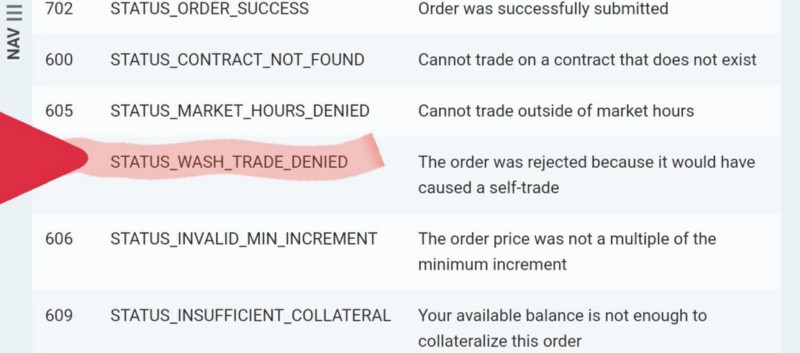|
Getting your Trinity Audio player ready...
|
The report estimates up to a catastrophic 80% drop in BTC price should a pump conspiracy be uncovered.
Bitfinex and Tether are on the (interrogation) spotlight again as news of its fallout with auditing firm Friedman LLP (FLLP) is making the rounds.
“We confirm that the relationship with Friedman is dissolved. Given the excruciatingly detailed procedures Friedman was undertaking for the relatively simple balance sheet of Tether, it became clear that an audit would be unattainable in a reasonable time frame. As Tether is the first company in the space to undergo this process and pursue this level of transparency, there is no precedent set to guide the process nor any benchmark against which to measure its success.”
This does not bode well with the public, nor does it do their pledge to transparency any favours. Since last year, they have vowed to dispel suspicions of manipulation and illegal trading practices by submitting to a full audit.
As if things weren’t bad enough—the news comes only three days after the release of an analytical report on Tether titled “Quantifying the Effect of Tether,” whose author chose to maintain anonymity due to the highly political and potentially dangerous nature of fanatics in the cryptosphere. Tether has long been suspected of conniving with cryptocurrency exchange Bitfinex to pump up the price of BTC. According to the report, should a pump conspiracy be uncovered, BTC could drop as far down as 80%.

Whether you support BTC or not doesn’t spare you of this potential catastrophe. If you hold any cryptocurrencies at all, this should concern you.
A collusion of such proportions, if proven, could be fatal not only for BTC—it could take down the rest of your portfolio. As we have seen throughout history, the unravelling and collapse of scams in the cryptosphere is enough to scare off holders from all cryptocurrencies even when none of the others are even remotely involved. Case in point—cryptocurrencies across the board all went on a nosedive when Bitconnect (which had Ponzi written all over its cult personalities from the very beginning) announced that they were shutting down. This was not even two weeks ago, and cryptocurrencies haven’t really fully recovered yet.
How Tether works, or at least how they say they do
Although Tether is built on top of the BTC legacy chain’s Omni network, it doesn’t really follow the same rules as an issuer of tokens. Unlike BTC or BCH—which rely on mining to generate their supply, Tether has a different method for “minting” its coins.
Supposedly, Tether issues “Tethers” or USDT only when people buy in by depositing US dollars in exchange for USDT, with a 1:1 exchange value. This is how it’s minted.
Allegations of Unbacked IOU’s
Users buy USDT with US dollars so they can engage in cryptotrading activities. However, no one was really watching or keeping tallies to make sure that Tether stays honest and only “prints” USDT when US dollars come in. Some allege that they are issuing more USDT than there are US dollars coming in—that they are printing Tethers out of thin air.
This is why they tapped FLLP in, supposedly to put an end to such suspicions by submitting to a full audit. But as mentioned earlier, this agreement has been dissolved. Friedman was, however, able to do a preliminary report that stated that the amount of dollars in Tether’s bank accounts did reflect the number of Tethers in existence. According to the preliminary report, however, FLLP has not been able to verify whether the funds in the bank accounts were exclusively deposits for Tether tokens, or mottled with funds from other sources, for purposes other than USDT withdrawals.

Allegations of pumping through Bitfinex, wash trading, and other manipulations
Medium user Bitfinex’ed, an active critic of Bitfinex has several posts explaining possible collusion between the exchange and Tether. Sudden surges of demand in a short span of time could trigger alarm bells, such as in July 2017 when a total of $80 million worth of Tethers were created within just one week. Bitfinex’ed suspects that the “fake money” was used for wash trading in Bitfinex.
According to the user, Bitfinex’s system actually allows wash trading—an illegal activity where manipulators sell and buy their own coins to fake the notion that there is a lot of market movement, which then hikes up values. Furthermore, the post shows how easy it is for an exchange to prevent this manipulation—which Bitfinex does not block despite newer, lesser known exchanges already implementing the restriction from the start.

Consequently, crypto watchers are nervous. The mounting suspicions resurrect fears of another Mt Gox-level disaster. Bitfinex, after all, is one of the biggest BTC exchanges in the world. “Everyone in crypto is very worried about the tether situation, and if these really count as dollars,” says David Gerard, author of Attack of the 50 Foot Blockchain. Tether has been dubbed “the largest ticking time bomb in all of cryptocurrencies,” with some speculating it may not even be backed by anything at all.

 12-16-2025
12-16-2025 





